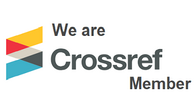Title:
ANALISIS MOTIF DAN DAMPAK PENGGUNAAN APLIKASI TINDER BERBAYAR
Author:
Abstract
Today's rapid technology development has created more advanced social media applications, such as Tinder. Tinder benefits its user with just a click away from finding their "ideal" match or partner by liking profiles they find appealing. Although users can use it for free, Tinder has a premium version offered to its users for more benefits. The purpose of this study is to examine the motives and impacts of using Tinder's paid package. Based on the qualitative method, this research was conducted by interviewing four consent subjects. The result shows that the general motives of using the premium version of Tinder are to find new friends, sexual partners, love, and ease in communicating with new people. The impact felt by the paid Tinder users is an easier approach to an encounter with their "ideal" partner.
Perkembangan teknologi saat ini membuat kemunculan aplikasi media sosial semakin pesat, salah satunya adalah Tinder. Setiap pengguna dapat menemukan pasangan yang ideal dengan memberi like terhadap profil yang disukai. Walaupun Tinder dapat digunakan secara gratis namun terdapat fitur berbayar yang juga ditawarkan. Penelitian ini memiliki tujuan untuk mencari tahu motif penggunaan Tinder berbayar, dan dampak yang dirasakan setelahnya. Penelitian ini menggunakan metode kualitatif dengan mewawancarai empat pengguna Tinder berbayar. Hasil penelitian ini ditemukan motif penggunaan Tinder berbayar yaitu untuk menemukan teman baru, mencari pasangan seksual, mencari cinta, dan kemudahan dalam berkomunikasi. Dampak yang dirasakan lebih mempermudah pengguna dalam menemukan pasangan yang ideal.
Keywords
Full Text:
PDFReferences
Andarningtyas, N. (2020).
“Lima Aplikasi Kencan Online Pilihan”. Retrieved From http://www.antaranews.com/berita/1735661/lima-aplikasi-kencan-online-pilihan.
Atmoko, B. D. (2020).
“Orang Indonesia Habiskan Rp 80 Miliar untuk Aplikasi Kencan”. Gizmologi.id .Retrieved from https://gizmologi.id/news/appannie-aplikasi-kencan-indonesia-rp80-miliar/, Diakses 7 Mei 2020.
Clinten, B. (2020).
“Motivasi Pakai Aplikasi Online
Dating, dari cari teman hidup sampai iseng.” retrieved from https://tekno.kompas.com/read/2020/02/14/14440047/motivasi-pakai-aplikasi-online-dating-dari-cari-teman-hidup-hingga-iseng?page=all
CNNIndonesia. (2019).
“5,2 Juta Pengguna Rela
Membayar Buat Main Tinder”. CNNINDONESIA. Retrieved from https://www.cnnindonesia.com/teknologi/20190808141158-185-419539/52-uta-pengguna-rela-membayar-buat-main-tinder, 9 Mei 2020.
Daneback, K., Mansson, S., & Ross, M. W. (2007).
“Using the Internet to find offline sex partners. CyberPsychology and Behavior, 10(1), 100-107”.
Dolan, E. W. (2020).
“Study suggests Tinder is not very effective for acquiring new sexual partners”. Retrieved from https://www.psypost.org/2020/01/
study-suggests-tinder-is-not-very-effective-for-acquiring-new-sexual-partners-55135
Husna, N. (2017).
“Dampak Media Sosial terhadap
Komunikasi Interpersonal”. Pustakawan di Perpustakaan UIN Sunan Kalijaga Yogyakarta.
Jakpat. (2017).
“Survey Report on Indonesian
Tinder Users”. Jakpat. Retrieved fromhttps://blog.jakpat.net/swipe-your-destiny-survey-report-on-indonesian-tinder-use, Diakses 7 Mei 2020.
Joinson, A. N. (2008). Looking at, looking
up or keeping up with people?:
Motives and use of facebook. Proceedings of the SIGCHI Conference on Human Factors in Computing Systems (Florence, Italy, April 05-10 2008), CHI ’08, ACM, New York, (pp. 1027- 1036).
Kamus Besar Bahasa Indonesia. (2019).
KBBI. Retrieved from
https://kbbi.web.id/dampak, Diakses 1 Juli 2020.
Kumparan (2019).
It’s a Match! Kisah 3 Perempuan yang Sukses Menikah dari Kencan Online https://kumparan.com/
kumparanstyle/it-s-a-match-kisah-3-perempuan-yang-sukses-menikah-dari-kencan-online-154665
/full
Kusumaningtyas, A,P, & Hakim, A,I. (2019).
“Jodoh di Ujung Jempol: Tinder
Sebagai Ruang Jejaring Baru”. Simulacra Volume 2 Nomor 2.
Lexy. J, M. (2000)
Metodologi Penelitian Kualitatif,
Bandung: PT Remaja Rosdakarya.
Maharani, S., & Manalu, R. (2017).
Analisis Faktor Pendorong dalam Melakukan Online Dating. FISIP Universitas Dipone.
Manu, N. P. & Joni, D. A., & Purnawan, N. L. (2017).
Self Disclosure Pengguna Aplikasi
Kencan Online (Studi pada
Tinder). FISIP Universitas
Udayana , 1-9.
McCown, J. A., Fischer, D., Page, R., & Homant, M. (2001).
Internet relationships: People who
meet people. CyberPsychology and Behavior, 4(5), 593-596.
McGrath, F. (2015).
What to Know about Tinder in five
charts. Retrieved from: https://blog.globalwebindex.com/trends/what-to-know-about-tinder/.
McQuail, D.(2000).
McQuail’s Communication Theory
(4th edition). London: Sage Publication
Merkle, E. R., & Richardson, R. A. (2000).
Digital dating and virtual relating:
Conceptualizing computer mediated romantic relationships. Family Relations, 49(2), 187-192.
Nailufar, N.N. (2019).
“Aplikasi Kencan, Teman Tidur
Satu Malam hingga Jodoh dalam Genggaman Tangan”. Retrieved from https://lifestyle. kompas.com/read/2019/08/03/060000420/aplikasi-kencan-teman-tidur-satu-malam-hingga-jodoh-dalam-genggaman-tangan?page=all
Nelson, D. L. & Quick, J.C. (2006).
Organizational Behavior.
Foundations, Realities & Challenges. Ohio: Thomson South-Western
Ningrum, D. W. (2016).
Plus Minus Kencan Online. Detik. Retrieved from https://inet.detik
.com/konsultasi-cyberlife/d-3263337/plus-minus-kencan-online, Diakses 25 Juli 2020
Peris, R., et al. (2002).
Online chat rooms: Virtual spaces
of interaction for socially oriented people. CyberPsychology and Behavior, 5(1), 43-51.
Peter, J., Valkenburg, P. M., & Schouten, A. P. (2005).
Developing a model of adolescent
friendship formation on the internet. CyberPsychology and Behavior, 8(5), 423-430.
Peter, J., Patti, M., & Alexander, P. (2006).
Characteristic and Motives of Adolescents Talking with Strangers on the Internet. Cyberpsychology & Behavior 9 (5).
Putri, T. N., Nurhayati, I. K., & Pamungkas, I. N. (2015).
“Motif Pria Pengguna Tinder sebagai Jejaring Sosial Pencarian Jodoh”. FiSIP Universitas Telkom.
Riadi, Y. (2020).
“Pendapatan Aplikasi Tinder Naik 43%”. Retrieved from: https://selular.id/2020/02/Pendapatan-apikasi-tinder-naik-43.
Rogers, E,M. & Kincaid,D,L.(1981).
Communication Networks.Toward
a New Paradigm for Research. New York: The Free Press.
Slocum, J. W. and Hellriegel, D. (2007).
Fundamental of Organizational
Behavior. Ohio: Thomson- SouthWestern.
Soeganda, P. (2009).
“Motivasi, Partisipasi &
Pembangunan”. Jakarta: Press Jakarta
Sugiyono, (2009),
Metode Penelitian Kuantitatif,
Kualitatif dan R&D, Bandung : Alfabeta.
Sumter, S.R., Vandenbosch, L. ,& Ligtenberg, L.(2016).
Love Me Tinder Untangling
Emerging Adults Motivation for Using The Dating Application Tinder. Telematics and Informatics.
Teixera, & Andrew. (2014). Exploring The Reputation Of Online Dating Sites: A Look
Into How User Self-Disclosure And Encouragement By Such Virtual Communities Can Affect User Satisfaction, Trust And Perception Of The Organization’s Emotional Appeal And Service Quality. Thesis Quinnipiac University.
Tresnawati, Y, Rahayu, M, & Husen, M (2018).
Tinder and Impact on Personal and Social Life. International Conference on Psychology and Communication 2018.
UniversitasPsikologi. (2018).
“Pengertian Motif, Teori Motif Afiliasi, dan Ciri-ciri Motif Afiliasi”.UniversitasPsikologi.Retrieved from https://www.universitas
psikologi.com/2018/08pengertian-motif-teori-motif-afiliasi.html, Diakses 29 Juni 2020
Wang, C. C., & Chang, Y. T. (2010).
“Cyber Relationship Motives: Scale Development .Social Behavior and Personality, 289-300”.
Wibawa,S W.(2016)
“3 Manfaat Tinder Untuk Kehidupan Cinta Anda”. Retrieved from https://lifestyle.kompas.
com/read/2016/10/01/200700620/3.manfaat.tinder.untuk.kehidupan.cinta.anda?page=all
Wood, J.T (2013).
“Komunikasi Interpersonal: Interaksi Keseharian”. Jakarta: Salemba Humanika, 2013
Yuhefizar. (2012)
“Cara Mudah Membangun Website Interaktif Menggunakan CMS” Joomla Edisi Revisi. PT. Elex Media Komputindo, Jakarta.
DOI: https://doi.org/10.31002/jkkm.v5i2.3808
Article Metrics
Abstract view : 0 timesPDF - 0 times
Cited By
Refbacks
- There are currently no refbacks.
Copyright (c) 2021 Jurnal Komunikasi dan Kajian Media

This work is licensed under a Creative Commons Attribution-NonCommercial 4.0 International License.

This work is licensed under a Creative Commons Attribution-NonCommercial 4.0 International License. View My Stats

.jpg)






1.png)


.png)



 Abstract views : 0
|
Abstract views : 0
| PDF views : 0
PDF views : 0